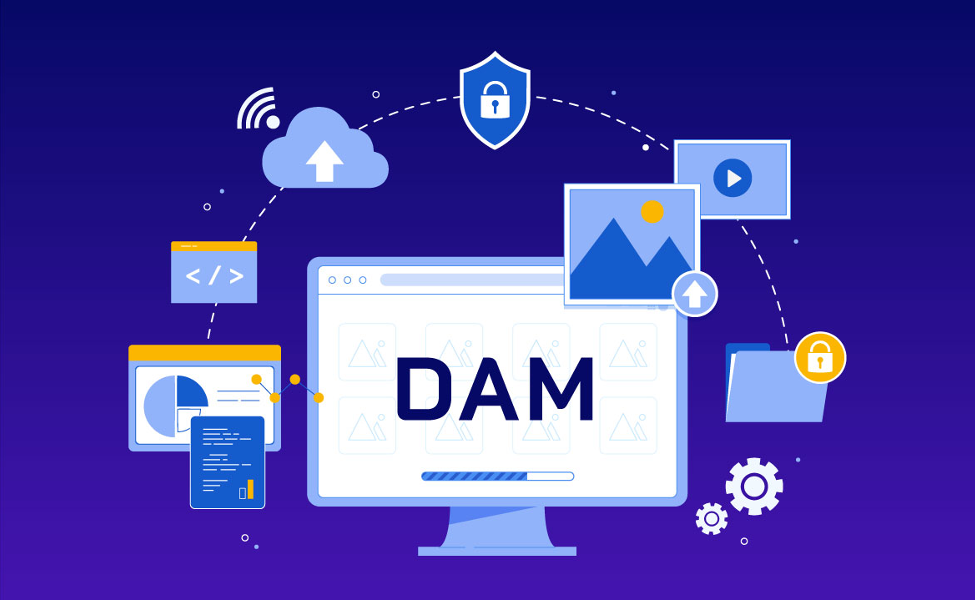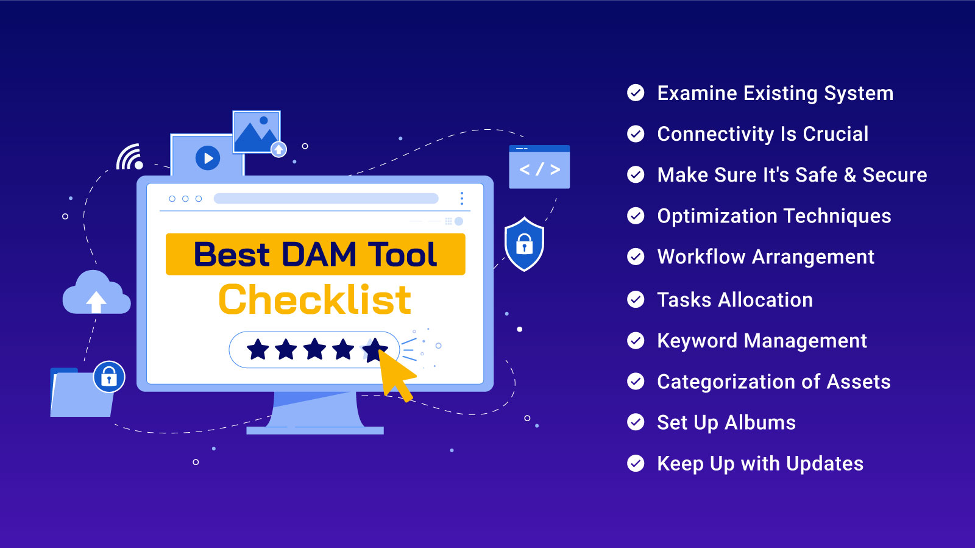
Table of Contents
What is Digital Asset Management, aka DAM?
Digital Asset Management refers to anything from a user’s digital file collection, to a professional photographer’s database, to systems that approach Enterprise Data Management. Using DAM, you can automate your creative workflow, archive and backup your files, measure use, conduct e-commerce, and much more.
Digital Asset Management Software’s Advantages
- It is easy to share and access files using digital asset management. Safely transfer files even without using links or attachments, FTP, CDs, or shared servers. The ability to set multiple degrees of user access for documents.
- To manage material from conception to publishing, DAM acts as a central center for your team’s efforts. Distribute and authorize digital content with a snap of a hand.
- You can quickly discover files using powerful search options.
- In order to ensure efficient brand management, digital asset management systems are equipped with a number of powerful features.
- Using digital publishing technologies in DAM, you may retain all your content in one place and at the same time, effortlessly publish them to all social networks.
Why is Digital Asset Management Important?

Digital Asset Management refers to anything from a user’s digital file collection, to a professional photographer’s database, to systems that approach Enterprise Data Management.
To be successful in business, every organization will develop a library of digital assets such as pictures, videos, etc. As these libraries grow, it becomes challenging to manage online information. In addition, teams will increase, which means more individuals will require material accessibility in order to execute respective jobs.
Users may be able to access obsolete content if the proper controls aren’t in force. Expired or mismanaged digital assets can have a domino effect on the firm. Older content is utilized in inappropriate places.
Aside from that, the content may be difficult to locate or perhaps inadvertently destroyed. To comprehend how Digital Asset Management lowers these risks, it is necessary to understand the DAM ROI (return on investment).
Does your team need DAM software? Learn more with this article.
How to Choose the Best DAM Tool

Choosing the best DAM tool for your team requires a list of criterias with which the DAM tool will serve well your team’s complete process of Content Operations.
● Examine Existing System
Before picking a DAM technology, it is basic to assess your work processes and frameworks to decide necessities and prerequisites. This will offer you a superior comprehension of what to search for, from help record configurations to metadata use and working framework support.
● Connectivity Is Crucial
If the DAM solution serves as a centralized hub for your digital assets, it must interact with your current programs. It is critical that your DAM integrates from numerous cloud and local sources and manages all file formats, so all of your important digital products are safe in one location.
● Make Sure It’s Safe & Secure
Check if a DAM has the necessary encryption security. To guarantee that authorized persons only access your data, you should look for specific protection best practices such as rigorous authentication and multi-factor security.
You may use a DAM tool to help you with everyday marketing operations, and it can also be used as a way to manage your brand assets. In addition, it’s a wonderful widget toolkit for everyone in your company to utilize. With that being said, Filerobot is a great DAM solution. Using Filerobot, your teams can quickly and easily save pictures, videos, and insert material on any web or mobile software anywhere in the world and then analyze, distribute, and accelerate it.
Let’s now have a look at how you can manage and accelerate Digital Assets on your Website:
● Optimization Techniques
If you manage your digital assets on your local storage, you may be allowing people to view unauthorized files and out-of-date photographs, as well. Expensive and wasteful to manage are business infrastructure and on-site software. Digital Asset Management in the Cloud does not require your staff to perform any maintenance – updates are automatically performed.
Think about how the new DAM solution will be utilized in your company. It is possible to set up different levels of access in a DAM system so that everyone has access to the digital assets employees need to do their jobs every day.
● Workflow Arrangement
Choosing who should have the authority to upload materials is a crucial element of designing the workflow inside your business. For example, if you do this right, your assets will be well-organized and routinely updated, which will make it easier for people to use the system on a day to everyday basis.
● Tasks Allocation
For the AEC and Real Estate industry, a project-based structure is proposed. To make finding photos easier for customers, you may modify projects to meet your unique business requirements.
For example, a team leader, project manager, or other managers may categorize digital assets by task. In this way, it will be easier to maintain a standard. People who create presentations, or aid sales and associates in the design and planning stages, may find it beneficial.
● Keyword Management
DAMs use keywords to make it easier for users to locate and manage their assets. The marketing team or the DAM administrator may be accountable for managing keywords, although it might be useful to obtain feedback from other organizations utilizing the DAM solution.
If the teams agree on the keyword list and layout, it will be easy for anybody to pick up and utilize. Any difference in any uploaded material needs to be taken into account when creating your keyword lists or structuring your content.
When choosing keywords, make sure that they are known phrases inside the company so that everyone can understand what they are talking about. The usage of synonyms in your structure will make it more user-friendly. Tags include synonyms, so when a phrase is searched, additional photos with similar labels will also be displayed.
● Categorization of Assets
Although your digital assets will be organized into projects, not every photograph will be in a project-based category. Organize your digital assets by reference instead than by kind, such as employee photos or brand logos. Referencing enables the user to organize their assets in a way that complements the way their organization operates.
● Set Up Albums
As an individual user, you may want to consider creating albums for your use or to share with others. Make use of Albums to create a collection of information that can be integrated into your Website or intranet.
Someone maintaining the Website might want to create an album for them to share with others who are working on the same activity. If you’re going to modify a topic that others can not see, or share photos from outside the system, it’s best to use albums.
● Keep Up with Updates
Maintaining your Digital Asset Management system’s functionality requires regular system upgrades. Cloud-based DAMs should upgrade themselves automatically even without your involvement.
They guarantee that you are getting the most out of your software investment and that you’re always on top of the newest patches for your system.
Final Words
For a first-time user, implementing a DAM system and maintaining the digital assets stored inside it might be a daunting task. Teamwork and preparation, on the other hand, may make it less stressful and more manageable for everyone involved.